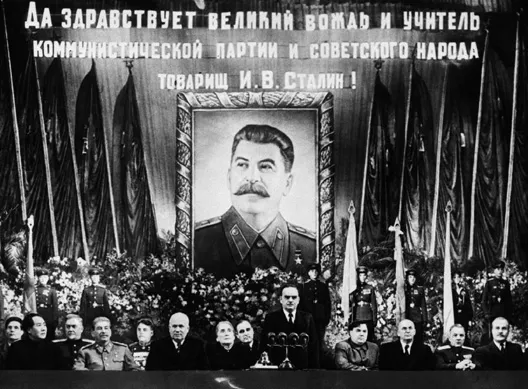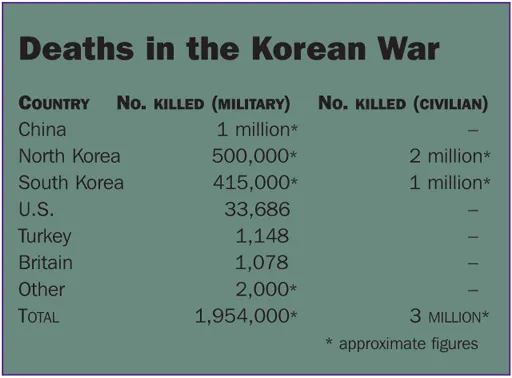
eBook - ePub
The Cold War
Reg Grant, Britannica Digital Learning
This is a test
Condividi libro
- English
- ePUB (disponibile sull'app)
- Disponibile su iOS e Android
eBook - ePub
The Cold War
Reg Grant, Britannica Digital Learning
Dettagli del libro
Anteprima del libro
Indice dei contenuti
Citazioni
Informazioni sul libro
In The Cold War, significant events that helped shape the Cold War are explored, including: the first H-bomb test; the Vietnam War; the Soviet invasion of Afghanistan; and the fall of the Berlin Wall.
Domande frequenti
Come faccio ad annullare l'abbonamento?
È semplicissimo: basta accedere alla sezione Account nelle Impostazioni e cliccare su "Annulla abbonamento". Dopo la cancellazione, l'abbonamento rimarrà attivo per il periodo rimanente già pagato. Per maggiori informazioni, clicca qui
È possibile scaricare libri? Se sì, come?
Al momento è possibile scaricare tramite l'app tutti i nostri libri ePub mobile-friendly. Anche la maggior parte dei nostri PDF è scaricabile e stiamo lavorando per rendere disponibile quanto prima il download di tutti gli altri file. Per maggiori informazioni, clicca qui
Che differenza c'è tra i piani?
Entrambi i piani ti danno accesso illimitato alla libreria e a tutte le funzionalità di Perlego. Le uniche differenze sono il prezzo e il periodo di abbonamento: con il piano annuale risparmierai circa il 30% rispetto a 12 rate con quello mensile.
Cos'è Perlego?
Perlego è un servizio di abbonamento a testi accademici, che ti permette di accedere a un'intera libreria online a un prezzo inferiore rispetto a quello che pagheresti per acquistare un singolo libro al mese. Con oltre 1 milione di testi suddivisi in più di 1.000 categorie, troverai sicuramente ciò che fa per te! Per maggiori informazioni, clicca qui.
Perlego supporta la sintesi vocale?
Cerca l'icona Sintesi vocale nel prossimo libro che leggerai per verificare se è possibile riprodurre l'audio. Questo strumento permette di leggere il testo a voce alta, evidenziandolo man mano che la lettura procede. Puoi aumentare o diminuire la velocità della sintesi vocale, oppure sospendere la riproduzione. Per maggiori informazioni, clicca qui.
The Cold War è disponibile online in formato PDF/ePub?
Sì, puoi accedere a The Cold War di Reg Grant, Britannica Digital Learning in formato PDF e/o ePub, così come ad altri libri molto apprezzati nelle sezioni relative a Politik & Internationale Beziehungen e Rüstungskontrolle. Scopri oltre 1 milione di libri disponibili nel nostro catalogo.
Informazioni
Argomento
Politik & Internationale BeziehungenCategoria
RüstungskontrolleCommunists Take Power in China
1 OCTOBER 1949
The civil war between the Nationalist government of China, headed by Chiang Kai-shek, and Chinese Communist guerrillas, led by Mao Zedong, began in 1927. When Japan invaded China in 1937, the Nationalists and Communists formed an alliance against the invaders. However, after the Japanese surrendered in August 1945, defeated by the Allies, the civil war in China soon resumed.
The Soviet Union, which occupied Manchuria in northern China at the end of World War II, helped the Chinese Communists establish a strong position there. But Stalin did not encourage Mao to try to take power in China, suggesting instead that he reach an agreement with Chiang Kai-shek. The U.S., while supplying the Nationalists with money and arms, also tried to push the two sides into making a compromise agreement. A ceasefire arranged by the Americans in January 1946 soon broke down, however, and the scale of the fighting continued to grow.
The Chinese Communists succeeded in winning a great deal of popular support in rural areas they controlled, through a reform programme that gave land to peasants. The Nationalists, by contrast, were notoriously corrupt and failed to stop runaway inflation. Their soldiers became increasingly disillusioned and began to desert in large numbers. In the summer of 1949, Chiang took refuge with the remnants of his armies on the island of Formosa (Taiwan). The Communists occupied Beijing and Mao declared China a People’s Republic.

Mao Zedong proclaims the founding of the People’s Republic of China in Tiananmen Square on October 1, 1949.
ALLIANCE WITH STALIN
The U.S. government was not prepared to undertake the major war that would have been required to challenge Communist power in China. Instead, there were hopes that a deal could be struck with Mao, to stop China joining the Soviet bloc. But in early 1950, Mao sought an alliance with Stalin. After the outbreak of the Korean War in June 1950, the U.S. gave its support to the Nationalists in Taiwan, refusing to recognize the Chinese Communist government as the legitimate government of China. By the end of 1950, Chinese and U.S. troops were fighting in Korea.
TIMELINE |
CHINA—CIVIL WAR TO KOREAN WAR 1945–1950 |
August 8, 1945 |
Soviet troops invade Japanese-occupied Manchuria after the Soviet Union declares war on Japan. |
October 1945 |
Chinese Nationalists and Communists begin fight for control of Manchuria. |
January 10, 1946 |
Nationalists and Communists agree ceasefire under pressure from U.S. |
July 1946 |
Nationalists launch major offensive in Manchuria. |
January 10, 1949 |
Communists defeat Nationalists at Xuzhou. |
July 1949 |
Nationalists begin evacuation of forces to Formosa (Taiwan). |
October 1, 1949 |
Mao Zedong proclaims People’s Republic of China. |
February 1950 |
Mao negotiates alliance with the Soviet Union. |
June 26, 1950 |
U.S. fleet is sent to protect Nationalist-ruled Formosa from Communist China. |
October 1950 |
Communist Chinese forces enter the Korean War. |

Mao, front left, attends the celebrations for Stalin’s birthday in Moscow, April 1950.

CROSS-REFERENCE
KOREAN WAR: PAGES 12–13
NIXON MEETS MAO: PAGES 32–33
Allies of the Soviets
“[We must] ally ourselves with the Soviet Union. . . . In the epoch in which imperialism exists it is impossible for a genuine people’s revolution to win victory in any country without various forms of help from international revolutionary forces, and even if victory were won, it could not be consolidated. . . . Would the present rulers of Britain and the USA, who are imperialists, help a people’s state?”
From a speech by Mao Zedong on the “People’s Democratic Dictatorship,” June 30, 1949.
Korean War Begins
25 JUNE 1950

Communist Chinese soldiers are taken prisoner by U.S. Marines during the Korean War.
In June 1950, Communist North Korea launched a full-scale invasion of South Korea, starting a war that would last three years and cost over 5 million lives.
NORTH–SOUTH DIVIDE
At the end of World War II, the Soviet Union and the U.S. had agreed to divide Korea into zones of military occupation, Soviet troops running the northern half and U.S. troops the south. The division was intended to be temporary but, as in Germany, the Soviets and Americans could not agree on a form of government for Korea. Instead, a pro-U.S. government was established in the south and a Soviet-backed government in the north.
When the north invaded the south on June 25, 1950, the U.S. immediately sent forces to aid South Korea, winning the backing of the United Nations (UN) for its military action. Fifteen countries, including Britain, sent troops to join the U.S.-led UN forces aiding South Korea. By the end of September 1950, UN forces had driven the North Koreans out of South Korea. The commander in Korea, General Douglas MacArthur, then launched an invasion of North Korea. Counter to instructions from the U.S. government, MacArthur advanced up to Korea’s border with Communist China. The Chinese then sent troops into North Korea to attack the UN forces and drove them back into South Korea.

TIMELINE | CONFLICT IN KOREA 1945–1953 |
August 1945 | U.S. and Soviet Union agree division of Korea into occupation zones. |
August 1948 | U.S. zone is proclaimed Republic of Korea. |
September 1948 | So... |